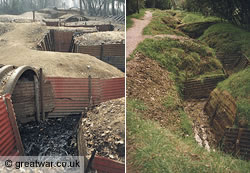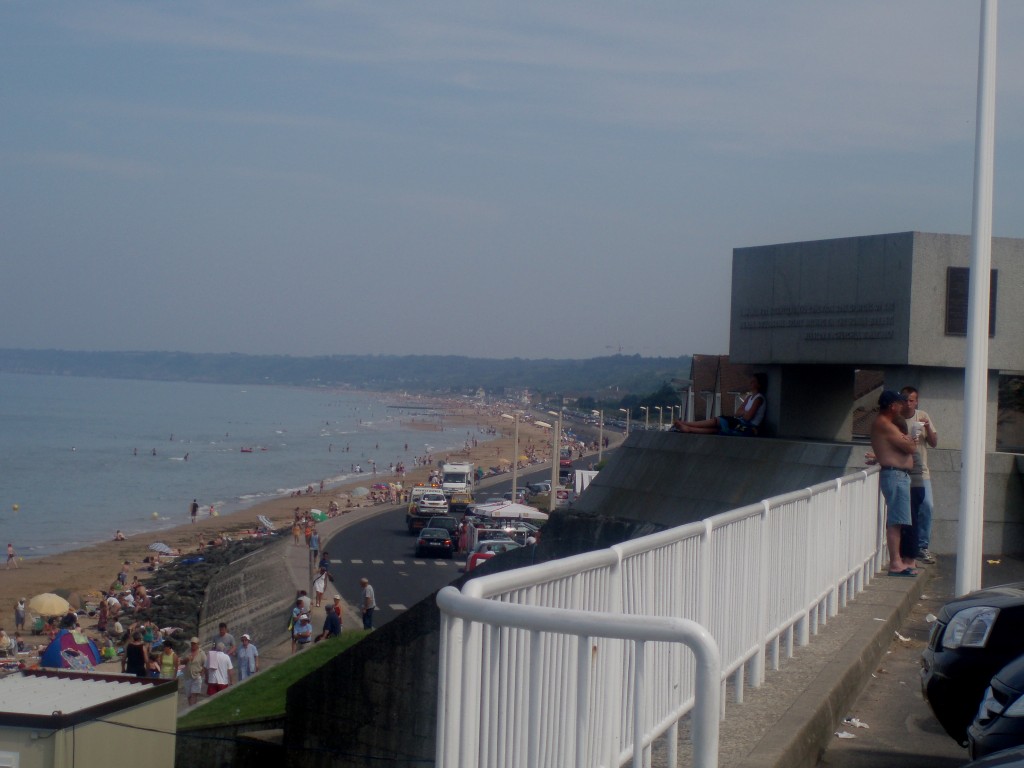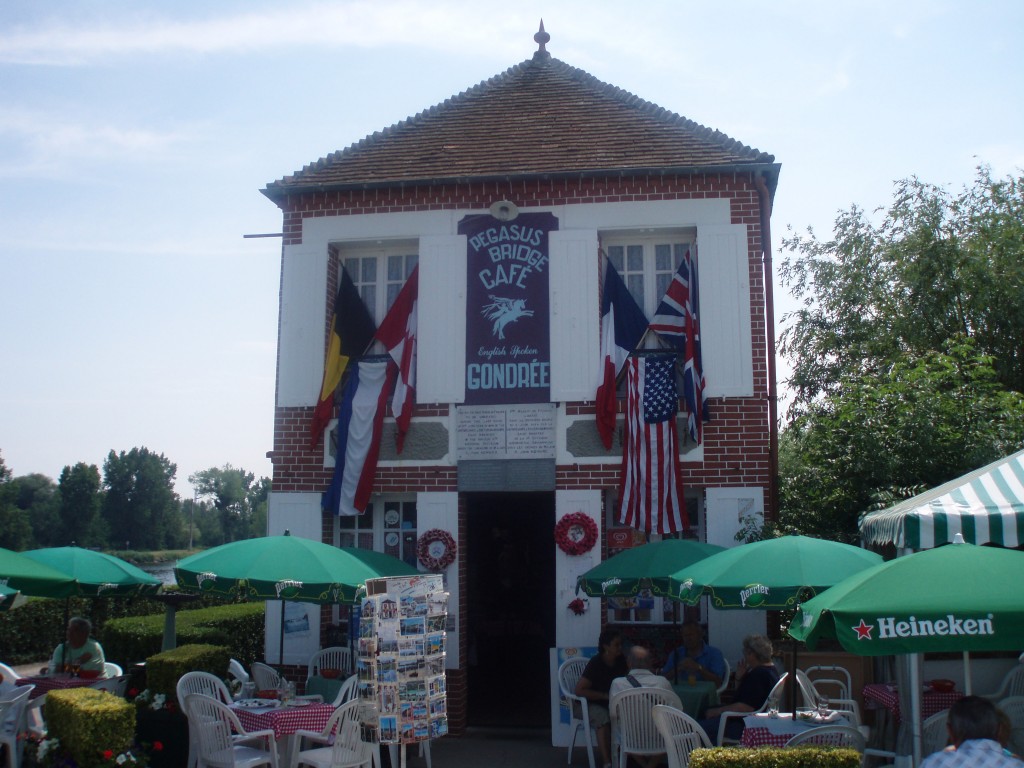How is reimbursement accomplished ?
The carte vitale changed a system based on paperwork to one with a very modern and efficient methodology. Prior to electronic billing, the patient had to obtain treatment or prescription forms called feuilles de soins from the doctor, attach any stickers (vignettes) from the pharmacist, which identify the class of drugs dispensed, plus a certificate from the employer (attestation annuelle), or a certificate of unemployment from the national office, and submit them all to the local CPAM. A few weeks later, a statement of amounts to be reimbursed would be received, followed eventually by the money. In 1998, 1.2 billion feuilles de soins were submitted.
If the doctor has the proper card reader (and in 2001 when the report was written, it was a problem), the card is swiped and the proper form goes electronically to the CPAM. Confidentiality is assured because a second card, issued to the doctor and called Carte Professionnel de Sante, or CPS, is required for transmission. Card holders have the right of access to the database where their records are kept by the CPAM.
In 1999, in response to a perception that 25% of French citizens postponed care due to financial concerns, and another 150,000 were still not covered, another system was added for the poor. Couverture Maladie Universale or CMU, now covers a million people who receive free care. There is CMU de base, which enrolls people who are not covered by NHI into CNAMTS and which covers all residents of France regardless of employment status. This provides free care. A second level, called CMU complementaire covers the supplement for those earning less than 3600 FF per month (as of 2001 before the Euro). This could be considered analagous to our system in which poor Medicare recipients are eligible for Medicaid payment of the deductable or co-payment.
Applicants must register at the CPAM and those eligible for CMU complementaire, may select a mutuelle to manage the co-payment. Once granted, the free care is valid for a year, after which the person must reregister. The person receives a carte vitale and the care is the same although they must select physicians from Sector 1 who accept the fee schedule (conventionne). Prescriptions, hospital care, some dental care and eyeglasses are included. CMU assurance complementaire covers 4.7 million.
British expatriates living in France can apply for CMU and the rules are described here. That site is one for advice to British retirees living in France and is interesting for other aspects of life in France.
The system is not foolproof as this message board for British retirees shows.
Here is more timely information about enrollment, again from the point of view of British retirees moving to France. This is a very large group and some areas in the southeast have completely English-speaking villages.
Providers
Free choice of doctor is assured, a feature of the French system that is very attractive to us as we are losing that very feature of the American system. The French can go to any doctor, can go to specialists directly without a “gatekeeper,” and can choose a public or private hospital. The private hospitals do not have to accept the government rates and generally require payment at the time rather than wait for the reimbursement from CNAMTS. Doctors may only advertise in “The Yellow Pages” and there is none of the marketing we see here. Health organizations and private clinics are allowed to advertise (some in the Paris Metro) and all doctors must post their fees. Patients are free to change doctors and seek second opinions. Appointments with GPs are 15 to 30 minutes and direct payment encourages the doctor to treat the patient as an equal, unlike HMOs in the US and NHS hospitals in the UK. Free choice of hospital is also the rule.
Fees
In 1997, 99.6 % of physicians were in Sector 1 or 2. Of these, 74% were in Sector 1, 83% of GPs and 62% of specialists. The Sector 1 physicians are contracted with the NHI and are paid from the negotiated fee schedule ( NGAP ), which is revised annually. By agreeing to the fee schedule, Sector 1 physicians become eligible for pension and sickness benefits. Sector 2 physicians may set their own fees but do not have the pension and sickness benefits. The additional fees, above the national fee schedule, are the responsibility of the patient. When this reform was established in 1980, Sector 2 became popular, especially with specialists, but initially only 7.5% joined Sector 2. By 1997, Sector 2 had 57% of physicians and access to the category was limited. This may have been the result of Sector 1 fees not keeping pace with inflation. In 1998, 51% of physicians were specialists (49% GP) and 75% of GPs were in private practice. Specialists were more likely to be employed by clinics and teaching hospitals but 68% were still in private practice. Many medecine liberale (fee-for-service) GPs are practicing in cabinets liberaux, a one physician office with a small staff. Group practices are more common in urban communities. Many GPs list themselves as medicins de famille or family doctors and care for entire families. The fee for one of these visits is quite modest, about 11 pounds sterling in 2001.
There is a gatekeeper-like system that is optional and is called medecins referent. The patient, by giving up the right of free specialist consultation, is rewarded with waiver of the co-payment and the physician receives the co-payment directly from the CPAM. GPs who agree to become medecins referent receive a capitation fee for each new patient. They must use generic drugs for 10% of their prescriptions and additional record keeping is required so only 13% of GPs have agreed to join. There has been considerable resistance from both GPs and specialists, who fear restricted referrals.
There are between 1,000 and 2,000 municipal medical centers with salaried physicans. They are operated by municipalities, trade unions, mutuelles (a remnant of pre-war medicine) and are important in caring for the poor. The institution of the CMU may affect these centers as Medicaid affected county hospitals in the US after 1965.
About 40% of doctors are union members and there are three unions; Confederation des Syndecats Medicaux Francais (CSMF), the pre-war organization; Federation de Medecins de France (FMF), a small federation which broke the resistance to the 1980 reform by signing up, and Medecins generalistes de France (MG-France). These were formerly professional associations but have become unions and are not averse to direct action when provoked. They negotiate fee schedules with CNAMTS each year and concern themselves with professional issues such as regulations and hospitals.
Hospitals
There is a daily hospital charge, forfait hospitalier , although patients may request direct payment for hospital care, called tiers payant, or “one-third to pay”. This is based on the ticket moderateur, a schedule of co-payments.
ticket moderateur — Co-payment based on Securite Sociale payment schedule
Consultation fee during hospital stay——-20 %
Hospital treatment————————— 20% most cases
Doctor’s fees (specialist and GP)————30%
Paramedic fees and lab fees—————– 35%
Medicines with blue vignette —————65%
Medicines with white vignette ————–35%
Vital or expensive drugs ———————-0%
Ease and comfort drugs (non-prescribed)–100%
Other expenses and transport—————–30%
Private hospitals may charge what they wish (although patients are reimbursed at the national rate) and payment is required at the time. All hospitals have a fixed charge per day, called taux/forfair journalier, which is a “hotel costs” charge for room, board, etc. US hospitals used to bill this way until the stupidity of insurance companies required itemized billing and set off wild inflation in hospital bills. Children, maternity patients and war veterans on pension are exempt from this charge. Advance approval for some services, such as dentistry, physical therapy and prosthetics is required.
Some cases are eligible for exemption for co-payment. Serious medical conditions such as diabetes, cancer and AIDS are exempt. The exemption pertains only to the diagnosis and other conditions require co-payment. A cancer patient with appendicitis, for example, must pay the regular rate for the surgery. More complex services and hospital stays over 31 days are also exempt. The exempt class of patients, such as children, maternity and war pensioners are the third category.
Types of hospital
Two thirds of hospital beds are in public hospitals. The Hospital law of 1991 gave the public hospitals autonomy and the larger hospitals and teaching hospitals are public. In 2000, there were 1,050 public hospitals with 323,098 beds (or 5.5 per 1000). They included Regional Hospitals, usually in cities and most have medical schools. There are 29 of these. Hospital Centers, which are in Department capitals, and hey tend to provide what we would call tertiary care, such as mental health or cancer treatment. Local hospitals are the third level and correspond to Level III hospitals in the US.
There are private non-profit hospitals, many of them specialized centers such as the 20 cancer centers. They tend to concentrate on long-term care and special care. They have similar rules and financing to public hospitals although staff membership may be restricted. In 1998, there were 24,782 beds in such institutions.
Private for-profit hospitals are mostly acute care and do a lot of surgery. Many are small although there has been a trend to consolidation. In 1998, there were 98, 813 beds in such hospitals and they have 20% of hospital capacity.
The public hospitals tend to have salaried doctors and France has a smaller proportion of hospital-based specialists than other European countries. Private hospitals tend to be staffed by fee-for-service specialists and the public hospitals have been short-staffed, often hiring foreign doctors to fill positions. Since there is no problem with delays and queues for care in public hospitals, the political issue seen in the UK does not exist in France. It is simply a matter of choice.
Hospital budgets have been under strain in recent years and, since 1984, have been under a global budget process. Since 1996, regional hospital associations ( ARH) have established budgets at a more local level based on need. France was the first country to adopt Diagnosis Related Groups (DRG) which became a controversial Medicare reimbursement reform in the US in 1986. Private hospitals sign contracts with the regional agencies, Schema regionale d’organisation sanitaire, or SROS. Private hospitals are paid on a combination of per diem and fee-for-service. They do not have a central budget like the public hospitals. All the hospitals, including the public institutions, are judged by patients on cleanliness and food quality. Semi-private and private rooms are the rule. There are no wards.
Emergency Services
Pompiers medicaux are the equivalent of paramedics with special training but are not at a level with physicians.
Service d’Aide Medicale Urgente (SAMU) is an ambulance service that is in radio contact with physicians and may involve physicians in the ambulance. There is a high hourly charge that is waived if the patient is admitted to the hospital. If they do not go to the hospital, they are responsible for the copayment of 30%. If they are not a member of Securite Sociale, they are responsible for the entire fee. If they have a mutuelle, it may pay the co-payment. American trauma physicians have been critical of the care of Princess Diana because the ambulance team remained on scene for over 30 minutes before deciding to transport her to the hospital. This may be a feature of SAMU care, which does often treat patients at the scene. American trauma care strongly supports the protocol of “scoop and run,” which discourages any attempt to stabilize a patient at the scene of an accident except for airway management.
Pharmacy and laboratory
Pharmacies are on every corner in France. Reimbursement requires a doctor’s prescription and is determined by the color of the vignette unless it is a “vital” drug. Both Securite Sociale and mutuelles provide payment so much of the cost may be covered for prescribed drugs. Approval of drugs is through Objectif National des Depenses d’Assurance- Maladie (ONDAM), a national agency, and Commission de la Transparence. There is price regulation although France has always had an excellent pharmaceutical industry. Spending targets are set and penaltes may be levied for violation.
Laboratoires are private and are recognized by display of a blue cross. Results go to the patient, not the doctor, to assure free choice.
French consumption of health services is the highest in Europe. In a 1998 survey of 23, 035 persons, chosen by household, 33% had visited a doctor at least once in the previous month, 19% a GP, 8% a specialist and 6% both. In 1994, mandatory practice guidelines (see my post on Evidence-Based Medicine), were introduced. They are called References Medicales Opposables (RMO) and are mandatory although an attempt to fine doctors for violating them was ruled unconstitutional. In 1998, use of RMOs resulted in a health spending budget below projectons and a “bonus” was provded to GPs. It was protested by the medical associations for rewarding provision of less care but I don’t know if anyone refused to accept it. The same method is often used by HMOs to reward compliance with guidelines for utilization.
Implications for US reform
I have never been a patient in the French medical care system. I do know that French surgery is of the highest quality and the entire laparoscopic surgery movement originated there and in Germany. In 1987, Eddie Joe Reddick, a Nashville surgeon and good ol’ boy, was vacationing in Paris with his wife. Bored with museums, he got permission to observe surgery in a Paris hospital. What he saw revolutionized American surgery. He returned and got a friend, Barry McKernan, to teach him laparoscopy. Within a year, surgeons were taking laparoscopy courses, many from McKernan (as I did in 1988), to learn the new technique. In 1992, I attended a laparoscopy meeting in Bordeaux to learn the newest techniques which were still coming from French surgeons. They have remained at the forefront of world medical advances.
The French system has many similarities to our own. It is complex but the components are similar to those of our own system and that fact may permit integration of gradual changes and allow alteration to respond to problems. The basic reform in France was the Securite Sociale, similar to our Medicare program in 1965. One of the proposals for reform has been to adapt Medicare to the entire population. One way to do this would be to use the existing health insurance industry as the French use the mutuelles, to handle copayment and administration. Health insurance in the US is not really insurance. Employers use insurance companies to administer self-payment programs. Insurance companies have become “administration service organizations.” This is not that much different from the non-profit CNAMTS, which has a board composed of employers, unions and physicians. One difference that may be necessary is to get rid of the adversarial role of the Federal Trade Commisson toward doctors and their organizatons. Any fee negotiation has been banned for 30 years and that inhibits any attempt to deal with for-profit HMOs which are destroying the medical profession, especially in California were they are triumphant. Poor care and bankruptcy for medical groups has been the legacy of for-profit HMOs.
The use of the electronic carte vitale alone would reduce overhead for medical practices by 75%. Estimates of costs of administration for American medicine probably exceed the entire budget for French healthcare. The French have been having problems with cost but much of that comes from factors unrelated to health care, such as the 35 hour work week and the cost of unemployment which discourages employers from adding staff. With a more vibrant economy, the cost of the French healthcare system would be far less than our own as a percent of GDP, and would relieve the burden on manufacturers. Unions would probably resist letting go of their health plans that they administer and have a sense of entitlement to since they were often the trophy of negotiation and even strikes.
Straight single payer with no co-payment, like the Canadian system, will never work here. We are not a people who will accept queues and overt rationing. The French system looks enough like our own that a transition would be less painful and could be gradual. It already has the Medicare basic format that it shares with Securite Sociale.





